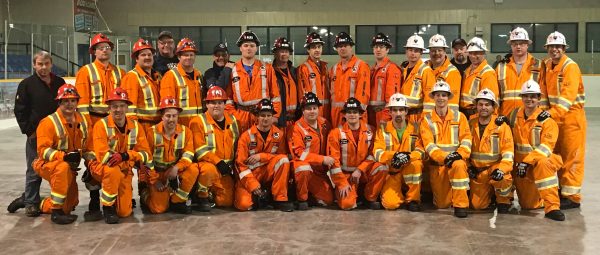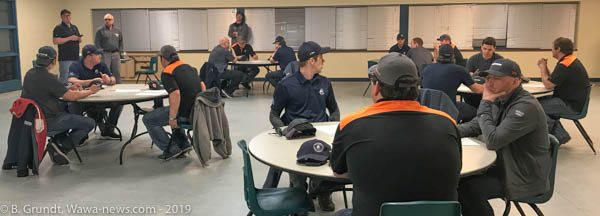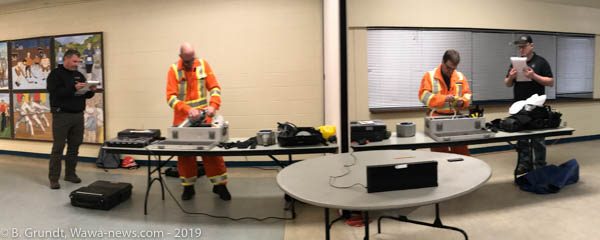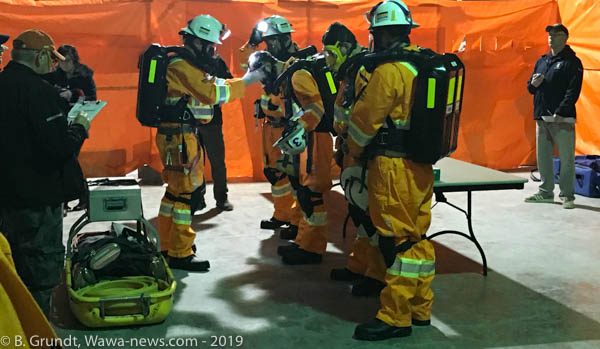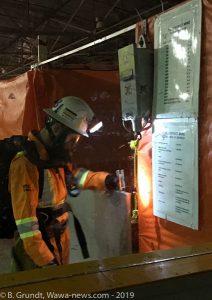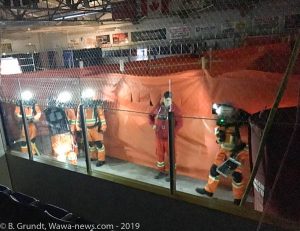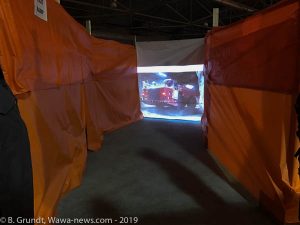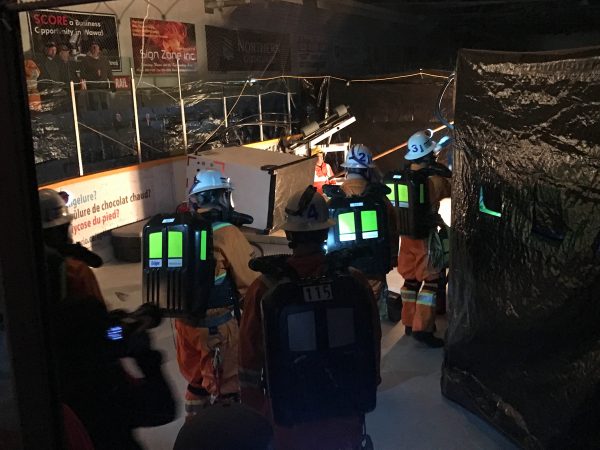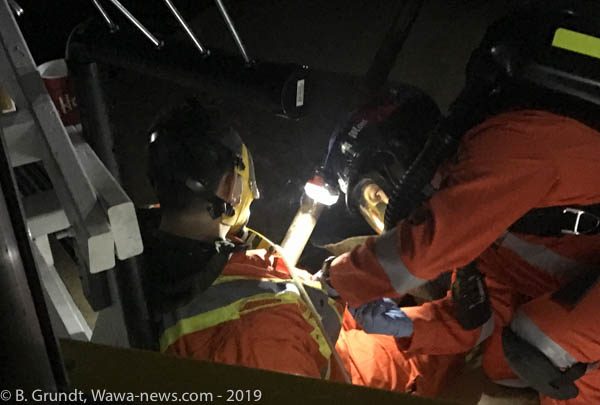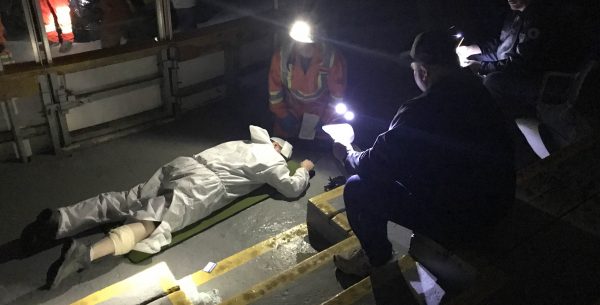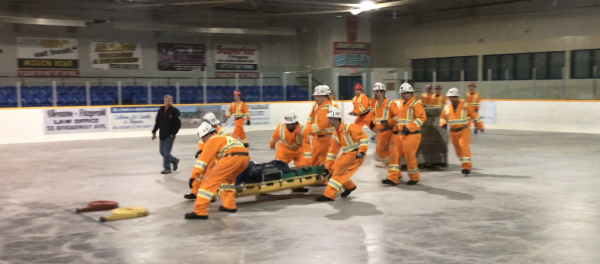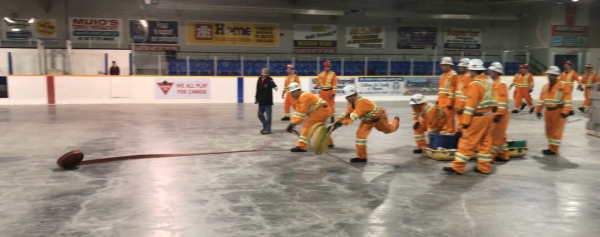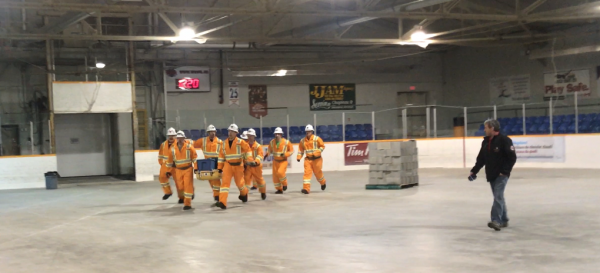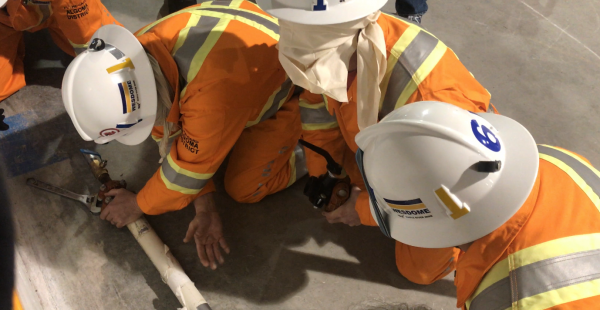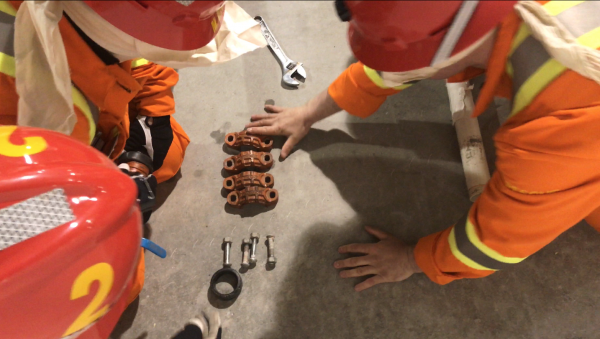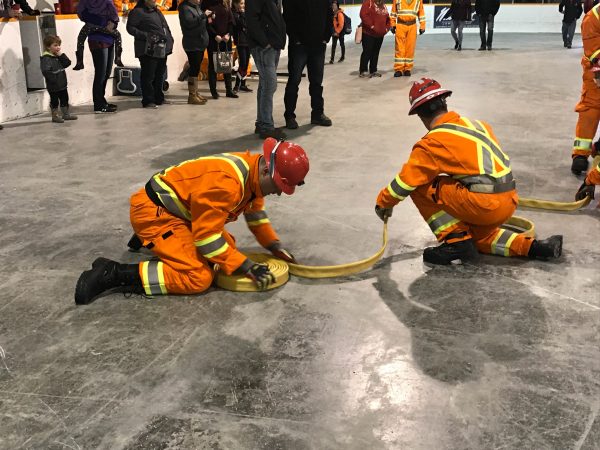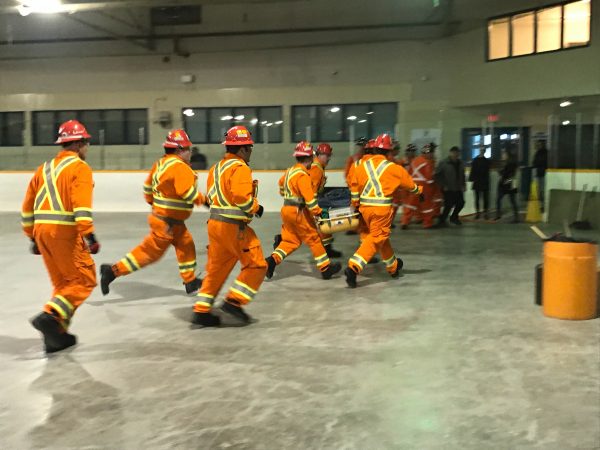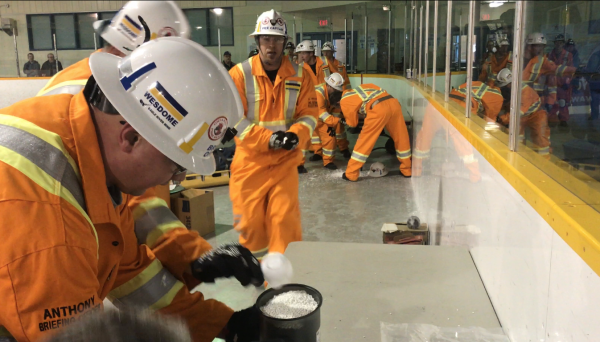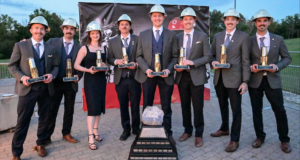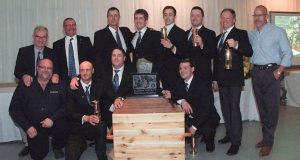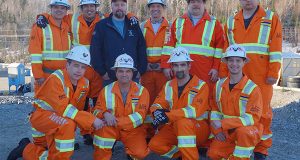Wesdome Gold Mines – Eagle River hosted the Algoma District Mine Rescue Competition last weekend at the Michipicoten Memorial Community Centre. Three teams competed, Wesdome, Hemlo and Island Gold.
First Part of the Competition – Written Component
Held the Wednesday night each team member had a written test to complete.
Second Part of the Competition – Technical Competition
After the written test, the Technicians from Wesdome and Island Gold competed in the Technical Competition.
Third Part of the Competition – Simulated Underground Rescue
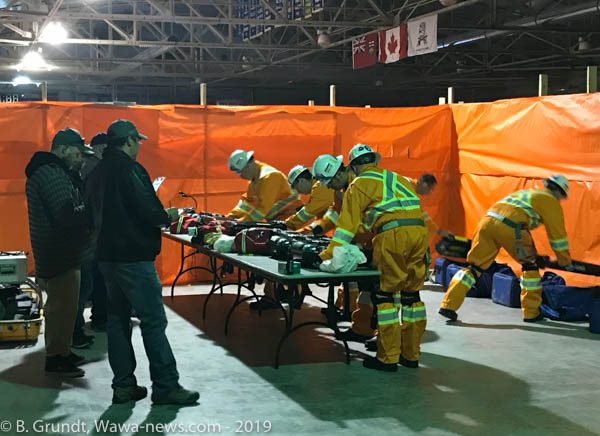
And so the day begins. It is 11:14 in the morning and a call has come in from the Cage Tender Albert Lauren who was reporting a loud bang and rush of air that blew open the vent doors on the 2000 level. He is on his way back to surface. The Mine Rescue Team is told to prepare to go down and investigate. A couple of minutes later another report comes in, “there is smoke on the 2000 level coming out of the exploration drift. It’s getting smokey, Hugo and I are leaving the vehicle and finding refuge on the level.”
Once the team was ready, they headed for the cage (elevator) and headed underground, there were four unaccounted on the 2000 Level and 3 on the 2200 Level. As they left the cage and walked through the drift, they saw an air tent and checked it out.
Inside the air tent were five people, one, a diabetic suffering from low blood sugar. She was able to explain that her blood sugar tester and glucose were in her lunch pail. The team also had to hook up the air tent to air. Once everyone in the air tent was ok – the team moved on to find the missing people.
As the team round a corner they could see a huge scoop blocking the ramp to the right, so they continued along the drift and another corner.
There in front of them was a diamond drill platform that was on fire. It appeared as if there had been an explosion. The diamond drill must have hit a methane pocket because there was fire burning from the diamond drill collar (hole) and the drill platform.
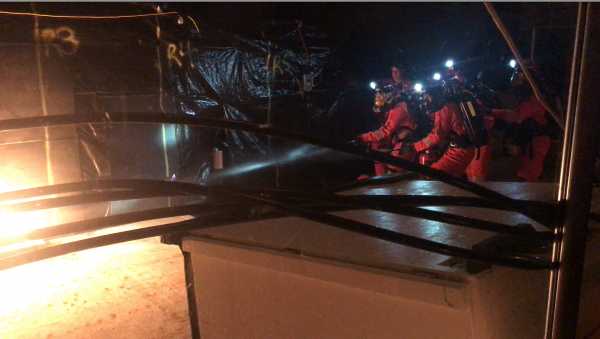
From the corner of the box that is pinning one man down, you can see the mine rescue team fighting the fire.
Immediately the team had to extinguish the fire on the drill platform, and left the flame burning at the collar. After doing this, they were able to investigate further.
The explosion had tipped the generator and the power pack for the diamond drill over pinning one man from the waist down; the other man had a gruesome injury – he had been impaled by the drill steel in the abdomen.
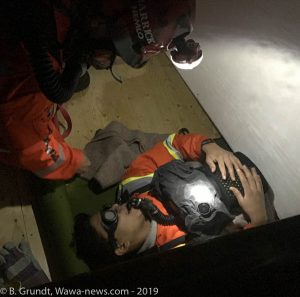 Still conscious, both men were reassured as vital statistics were taken and noted. The burns on his face were bandaged in order to allow the breathing apparatus to be worn. His arms and hands were also bandaged because of burns. The drill steel was supported and secured, and cut. Once the drill steel and the man’s injured hand were supported and secured, the man was lifted into the mine rescue basket for transport to surface.
Still conscious, both men were reassured as vital statistics were taken and noted. The burns on his face were bandaged in order to allow the breathing apparatus to be worn. His arms and hands were also bandaged because of burns. The drill steel was supported and secured, and cut. Once the drill steel and the man’s injured hand were supported and secured, the man was lifted into the mine rescue basket for transport to surface.
The man who was pinned was reassured that another team or this team would return with the air lift bags to free him. He was given a SSR 90 M which would give him at least 90 minutes of breathing air.
While these two victims were being rescued, the 6th Man was conducting an assessment of another miner who had fallen. He had an open fracture of his lower leg and some other minor injuries. Once the victim had been assessed, he would return to the staging area and get the air lift bags ready for his team to retrieve the pinned person.
Fourth Part of the Competition – Skills
In a timed skills competition, each team had to navigate a course which had them carry a mine rescue basket, throw two lenghts of hose, have two team members assemble a hose clamp – blindfolded, run outside (with the basket) knock a pail off a ladder with a water hose, return inside with the basket, roll up and throw the hose again, in a relay fill a container with white pellets, and return the the start, still carrying the basket!
Although the whole event looks like fun, this is a very important part of the training. It provides a chance to actually test the emergency response capabilities of each team in an identical situation. There are hundreds of volunteers that plan and present a unique scenario to test their skills. One hopes that their skills and talents are never required, but for those who have family and friends who work underground know that they are there, if needed.
Here are some of the volunteers who helped setup and implement this year’s scenario.
Procedures – Leo Belanger (Hemlo), Steve Brown (Alamos), Wayne Benoit (Wesdome)
Specifics – Paul Andre and Matthew VandenHeuvel (WSN), and Roger Gamache (Alamos)
First Aid/Fire Fighting – Joan Gauthier (Hemlo), Jeremy Becker (Borden)
#6 Man – Norm Hart (Hemlo), and Donald Jr. Andre (Alamos)
Briefing Officers – Denis Bilodeau (Hemlo), Dalton Beaudet (Wesdome), Walter Adler (WSN)
Fresh Air Base – Gilbert Wahl, Jason Leclair (Hemlo), Don St. Amand (Hemlo), Patrice Benard (Alamos), Duncan Gibson (Harte)
Casualties: Cait VandenHeuvel, Frances Gonthier (Borden), Danny Szasz (Harte), Rene Dumont (Wesdome, Roy Krell, Warren Sands (Harte), Bobby McGuire (Wesdome), Kane Sutherland (Harte)
Scribe Service Base – Richard Lantheir (Harte), Gilles Bertrand (Borden), Joe Crego (Alamos), Blair Jardine
Floor Setup Scorekeeper – Roy Krell, Francis Gonthier (Borden), Danny Szasz (Harte), Cait VandenHeuvel, Tim Ebbinhaus (WSN)
- Highway Closures (17, 101, 11, 614, 631) - November 26, 2025
- MHS Evacuated UPDATED - November 26, 2025
- Wednesday Morning News – November 26th - November 26, 2025
 Wawa-news.com You can't hear the 'big picture'!
Wawa-news.com You can't hear the 'big picture'!
